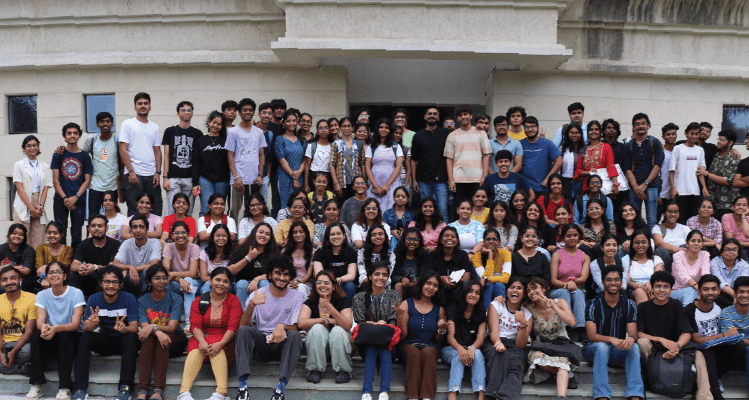The aim of education in our country has always been passing on subject matter and knowledge. The curriculum is commonly designed around the elemental topics of science, maths, social studies, and language (mostly English, Hindi, and regional). Each of these subjects is taught with a basic lesson plan by breaking the content into small bits. The teaching in our country is based on this elemental structure, right from school to higher education in colleges.
The world around us has transformed exceptionally. The testimony of this statement is that the problems we face today are far more complicated and the world we live in is much more complex. It is proven that we cannot use the same thinking to solve a problem that we used while creating it. We need to look at the needs of the people and design ways to solve problems of the system, rather than looking at the system and solving its problems. This is how design thinking works to get innovative solutions, by keeping people at the heart of innovation and emphasizing them.
The idea of design thinking came into existence when brands started focusing on customer needs and requirements rather than the business needs to become a market leader and with that universities focused more on design courses which lead to the best colleges for bdes in india. The brands adopted design strategy and innovation to increase their market capture and positions their products which were then adopted across their research, development, management, and business as well. With changing times, educators too are developing ways to inculcate design thinking into student’s learning right from their high school, undergraduate, and postgraduate education.
What is Design Thinking?The simplest explanation of Design Thinking is that it is a problem-solving mechanism. However, it is an acutely human and inconsistent mechanism where an individual contemplates like a designer to devise an inventive solution that can address people’s needs. It places people at the center and then thinks not just about a way out, but how will people feel when they use the solution. When we talk about design education, pondering this way is a specified move where innovation, understanding, technology, compassion, and empathy all come into play as designers deliberate ideas, even the most unreasonable ones. The best outcomes stem from persistent trials, experiments, and the assessment of prototypes.
Design Thinking is best suited to acknowledging problems where various realms cross paths, at the crossroads of business and society, rationale and empathy, analytical and innovative, individual requirements, and financial requirements and amongst organizations and individuals. It is usually used to deal with simple problems with known solutions until we are looking for a new or inventive solution with a preferred goal that is unlike the usual. Design Thinking works fine in circumstances where we need to make a human impression of things, impending challenges in ways that best suit human requirements. It starts with determination, ambition, or a commitment to better the circumstances. It presents a way of probing to find innovative means of revamping the product, use, or design.
Design thinking can also be classified as an attitude that can be practiced in almost any framework where novelty or out-of-the-box thinking is mandatory. It can be integrated with methods, approaches, and techniques from other curriculums, business models, management models, and social innovative strategies. It is a procedure that relies on alteration in circumstances. A conventional design thinking procedure may require five or more stages, but these stages may not be subsequent, and these stages may be repeated or excluded any number of times to arrive at a conclusion.
The future of Design ThinkingTo move away from a set pattern and design the future we hope to live in, we must look beyond the obvious. We must move ahead from designing for today while evolving as per our potential and values. Going forward, design thinking must be as per the future trends. We must work to fathom where that peak of innovation prevails in education. Based on that insight, we can work in reverse to speculate and test the relevant shifts in our methods that get us closer to that peak, and perhaps design a clear way to the future we visualize for our institutes. This is about using the concepts of strategic insights and design thinking to accept skepticism, recognize opportunities, and make those modest yet substantial changes.
